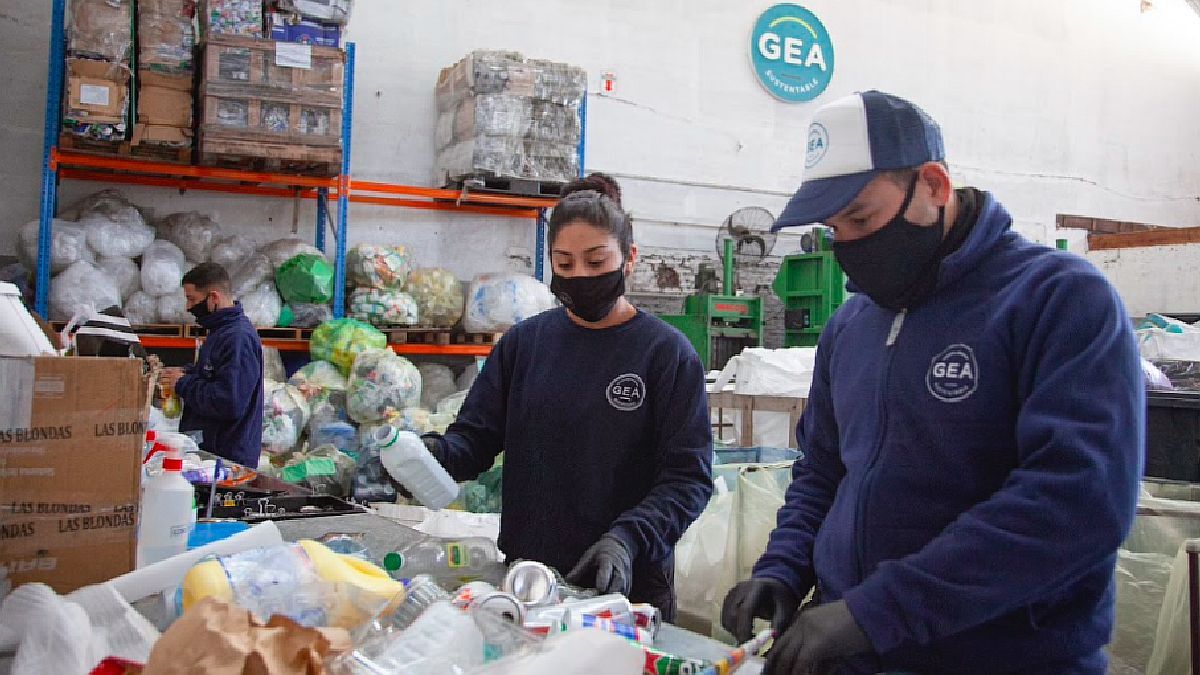We usually associate the term “residue” with everything that no longer serves us, breaks or that simply lost value on a social level because it went out of style or we found a newer option. Nevertheless, Technically, there is the possibility of totally or partially exploiting many of these wastes. They are capable of being transformed into a new product or input if we classify and treat them appropriately.
The classification that we make of our waste will depend on the possibilities that exist for each material to be separated in my municipality. Because, The first thing we must do is verify if there is a differentiated collection system in my area. If so, we will deposit recyclable materials, such as paper, cardboard, plastics, metals and glass, in the corresponding containers.
The bales of bottles arrive at the Cabelma plant from cardboard cooperatives that separate the waste for recycling.
The bales of bottles arrive at the Cabelma plant from cardboard cooperatives that separate the waste for recycling.
In general, municipalities make containers for all recyclables available on the streets and / or squares together, but today many go to different classifications, such as plastics separately in their own container, or papers and cardboard for a side and the rest of the recyclables on the other. This will depend on the recovery possibilities that these materials have in each locality and the conditions in which these resources need to arrive in order to be recovered.
In the event that there is no formal program for the collection and treatment of recyclables by the municipality, we can go to cooperatives in the area or private companies that are dedicated to recycling these materials. There are also many alternative proposals from entrepreneurs and artisans who reuse materials, extending their useful life.
Tips for recycling waste
It is important to bear in mind that recyclables must always be separated clean and dry, especially plastic or cardboard containers.. The better the conditions of the materials, the easier they will be to recover and the greater value they will have for the recycling industry, which translates into greater possibilities of being effectively recycled.
In addition, behind all the classification processes, especially in our country, there are people working and therefore, it is not the same that they work with clean recyclable materials, and therefore, in healthy conditions than with residues with food remains.
garbage bag

Pixabay
How clean and how dry? That will depend on the type of material it is and if it is liquid or solid waste remains. For example, a plastic tray with food scraps can no longer be recovered, instead a plastic bottle with some soda can be used. This also depends on the technologies that we have in our country for recycling. Ideally, you can always give a quick rinse to all the materials before disposing them in a differentiated way, but neither should we rinse them thoroughly because water is a non-renewable resource that we must take care of.
On the other hand, it must be taken into account that within the household waste There may also be a certain amount of hazardous waste, such as cells and batteries, fluorescent lamps, lacquers and paints, pesticides, among others; construction and even pathogenic waste (remedies, diapers and other dressings, for example) that must be managed in a special way. For these cases, the best option is to contact your municipality and ask if it has a specific program for receiving this type of waste. Many times they have green points (fixed or mobile) or eventual reception days to receive these materials.
It is essential to always remember that the best waste is the one that is not generated. Therefore, before discarding any product or container, pause and ask yourself if it can be reused, donated, repaired or even sold to extend its useful life and avoid the unnecessary generation of waste.
Lawyer, specialist in Environmental Direction and Management and Co-founder of GEA Sustentable.




